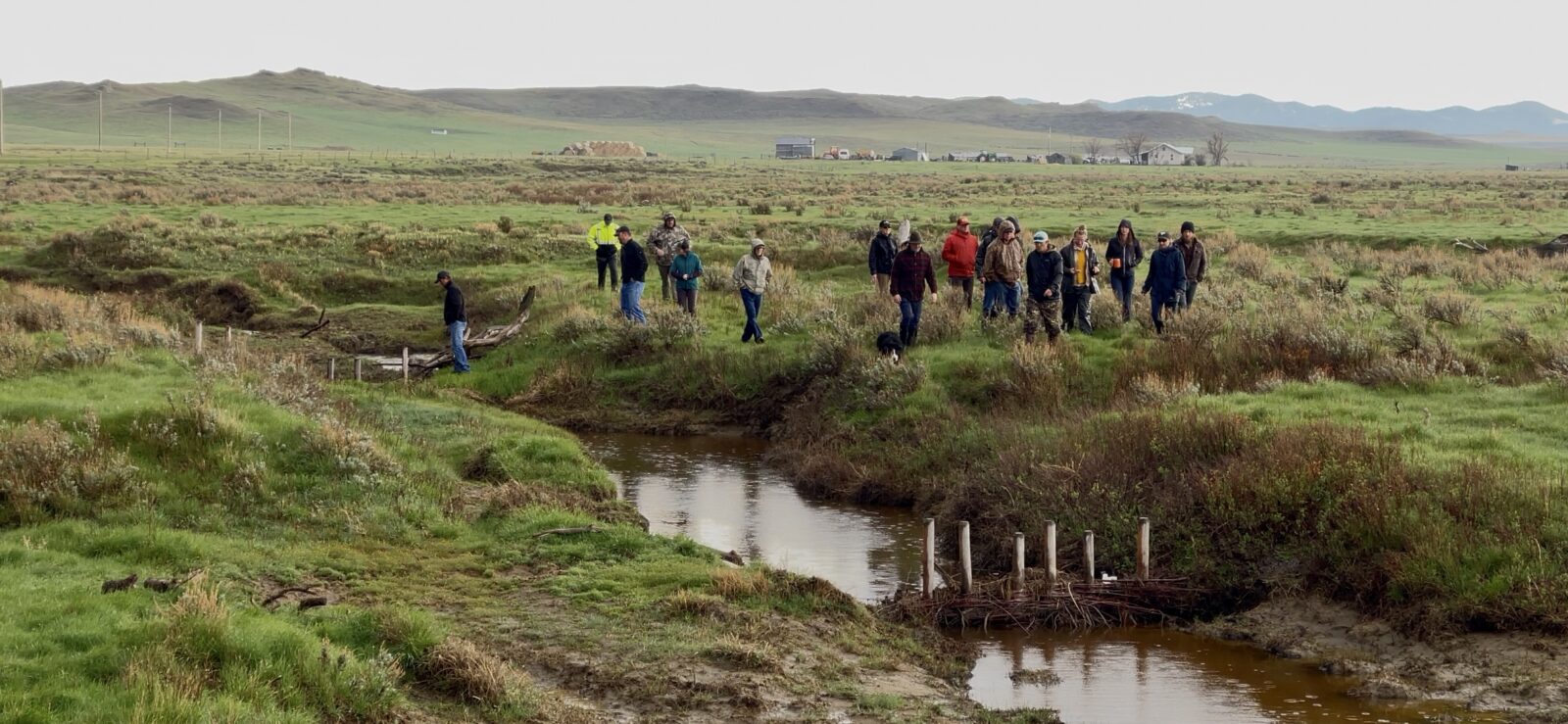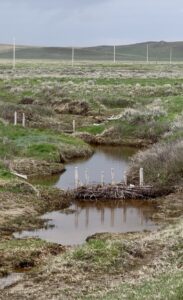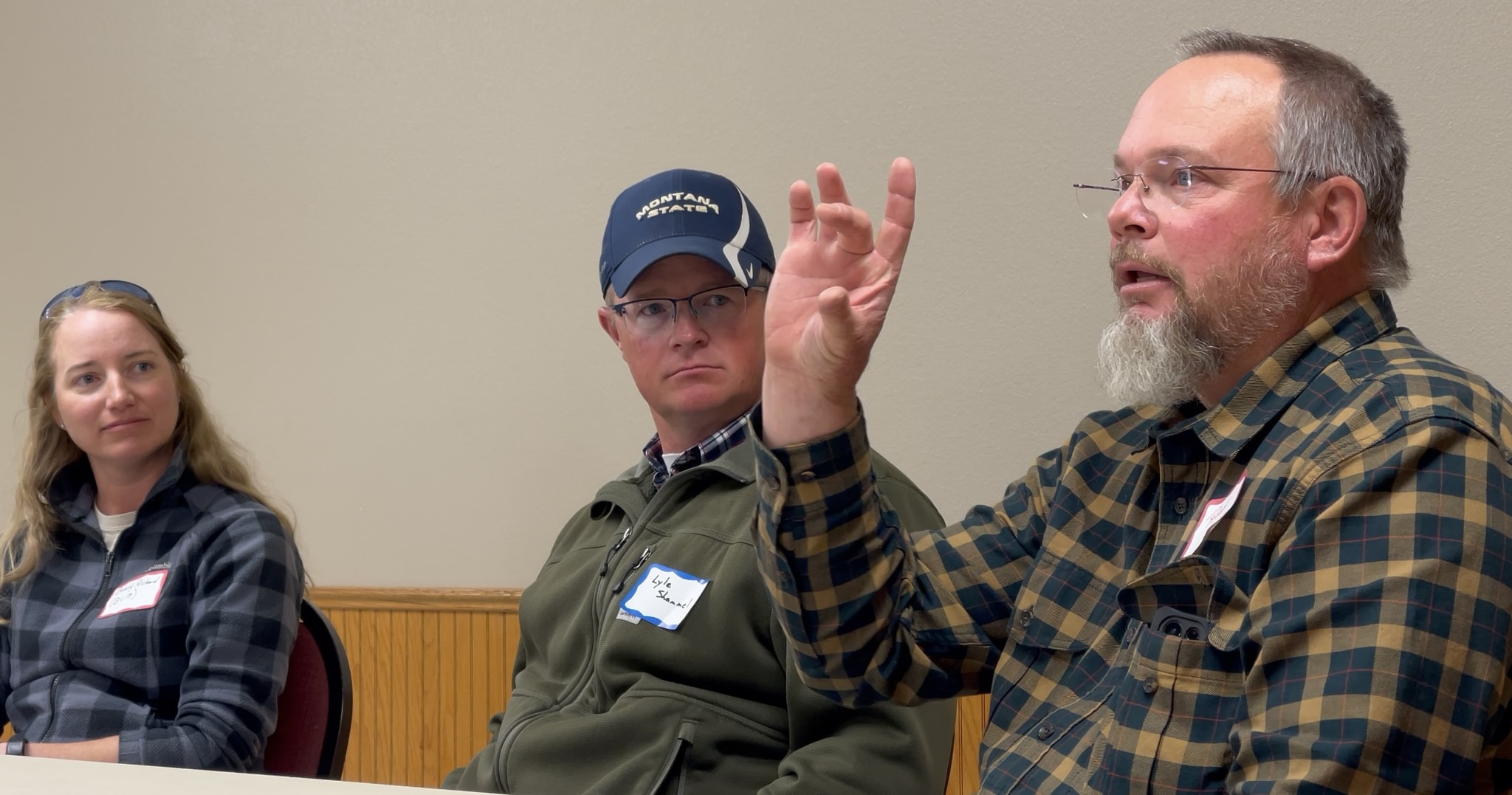We have much more to do and your continued support is needed now more than ever.
Water. Drought. Community: Landowners Come Together for Prairie Stream Restoration

Years of seasonal drought conditions have many Montana landowners seeking solutions that can keep water on the land longer to help improve conditions for livestock forage and wildlife. The National Wildlife Federation, Montana Wildlife Federation and Bureau of Land Management teamed up to offer a Prairie Stream Restoration Workshop in Winifred, Montana. This workshop focused on providing resources and tools to landowners and managers to improve drought resiliency through low-tech, process-based restoration.
Growing up in Montana with a ranching family, water has been the center of life. I remember spending hot summers outside of Roundup, Montana, eating watermelon with my great grandmother as we watched the sunset over the prairie and sagebrush after a long day of fixing the fence. The topic of conversation was on a constant rotation between when to turn off the well on one trough and open the gate to another pasture, to what day would be best to go to town and run errands, weather dependent. Though, the majority of the year, I lived on the Gallatin River outside of Belgrade, I learned the most about the world and myself every summer living on the ranch. After five years traveling across the West trying to find my place in the world of conservation after getting a degree in Wildlife Biology from the University of Montana, I found a home in restoration, more specifically riparian restoration. Tying my roots back to central Montana, I am honored to be home giving back to the communities that raised me by helping land managers restore our prairie systems to more drought resilient landscapes.
Low-Tech, High Reward

Low-tech, process-based restoration — also known as LTPBR — is a technique designed to be simple, cost-effective, hand-built structures that help repair degraded streams. This approach is designed to let the water do the work. By building structures that mimic beaver dams, we hold back water on the landscape later in the season, disperse flows onto the floodplain during large flow events, and recharge groundwater supply. LTPBR regulates water temperature in deep pools to provide safe habitat for aquatic life. It also promotes healthy riparian vegetation, which in turn stabilizes bank erosion, sustains habitat for wildlife species dependent on the ecosystem services water provides, and so much more.
The goal of these structures is important as we experience the impacts of climate change. These structures help to create a more drought-resilient ecosystem supporting a diversity of species. Beaver connected floodplains have also been shown to create safe havens during wildfire in the face of climate change. Though we are a long way from beavers being restored to their historic range, LTPBR techniques can provide similar ecosystem benefits.
What a day–and a field day!
Keeping water on the land longer has great value. This was at the heart of our event that brought together more than 30 people – ranchers, landowners, conservationists and others interested in water/land issues. They signed up and turned up to learn about various low-tech stream-improvement methods, and how to find the resources and assistance needed to get projects done on their lands. The workshop included a field trip to see a recently completed project on the nearby Rose Creek, 3 miles east of Winifred, MT.
Robert Griffin led the conversation with his own experience experimenting with low-tech restoration land. Griffin hosted a NRCS sponsored workshop on his lands outside of Roy, Montana, in 2017, and described the benefits of restoring the riparian area and how it not only kept the forage on his property greener later in the season, but brought beavers back to his stream. Beavers have now taken over the work of maintaining the original structures which in turn has brought many woody riparian species like willows back to his property.

Griffin’s experience elevated the many benefits of stream restoration and the return of beavers, which he shared with his fellow landowners: “I never claimed to be a very smart man, but I’m intelligent enough to know that when you live in a semi-desert environment, water is your limiting factor. If you are fortunate enough to have beavers on your property they will retain water and do the work for you. If not, the use of beaver dam analogues can be a solution in those beaverless locations. They are a great tool to improve the health of a watershed and the productivity of your operation. Creating more diverse habitat and witnessing the varied creatures they [beavers] attract is an added bonus.”
Griffin’s perspective on land management and conservation resonated with me and how my family ran their operation. It’s the reason why I decided to go to school and get a degree in Wildlife Biology. His story, like so many others, is one of reciprocity. As ranchers, landowners and land managers, we see the impact of our land use and restorative practices on the ecosystem every day.
Learn more about work from the National Wildlife Federation Northern Rockies, Prairies and Pacific Region here.





















